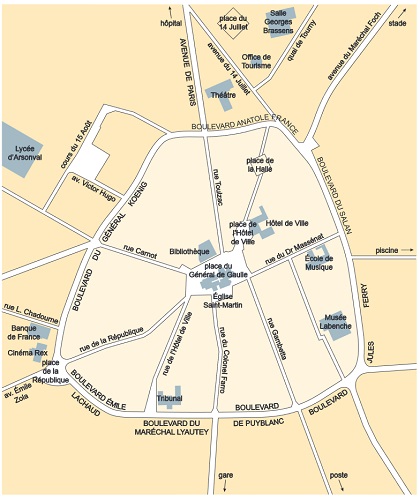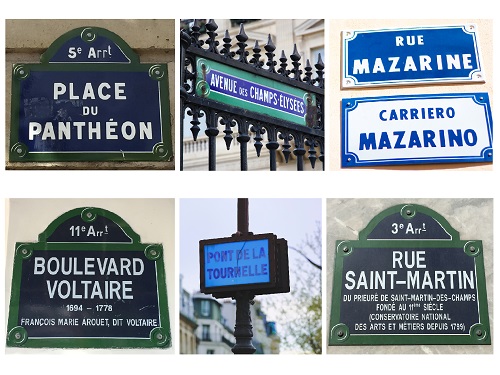3 Giving instructions using devoir and il faut
In this section you will learn how to give instructions using devoir and il faut.
Activity 6
Part 1
Listen to the recording below, which has been repeated from the previous section.
From the context, can you work out the meaning of the following new verbs?
- remontez
- traversez
- passer devant
- contourner
Transcript
Discussion
- remontez: go (back) up
- traversez: cross
- passer devant: pass in front of
- contourner: go around
Part 2
Read the transcript of the recording and try to identify two ways of giving directions that you haven’t yet encountered.
Discussion
- Dialogue 3: il faut (passer); il faut (traverser); vous devez (tourner).
- Dialogue 4: vous devez (contourner).
You saw earlier this week that you could use the present tense and the imperative to give instructions. Here are two other ways of giving instructions:
vous devez + verb in the infinitive
Vous devez tourner à gauche. You must turn left.
Vous devez contourner l’église. You must go round the church.
il faut + verb in the infinitive
Il faut passer devant l’hôtel de ville. You must walk past the town hall.
Il faut traverser la place. You must cross the square.
Note that devez comes from the verb devoir. Faut comes from falloir, a verb you will only ever meet in the third-person singular (il faut in the present tense). The il does not represent any individual person. It is impersonal.
Activity 7
Part 1
Read the following instructions, which contain factual errors. Then look at the map and provide the correct directions.
Exemple
Pour aller à la gare, prenez la rue Gambetta. (il faut)
→ Non, pour aller à la gare, il faut prendre la rue de l’Hôtel de Ville.
Pour aller à la salle Georges Brassens, passez devant le cinéma. (vous devez)
Discussion
Non, pour aller à la salle Georges Brassens, vous devez passer devant le théâtre.
Pour aller à l’hôpital, continuez tout droit dans l’avenue du 14 Juillet. (il faut)
Discussion
Non, pour aller à l’hôpital, il faut continuer tout droit dans l’avenue de Paris.
Pour aller au lycée d’Arsonval, vous traversez le boulevard Jules Ferry. (vous devez)
Discussion
Non, pour aller au lycée d’Arsonval, vous devez traverser le boulevard du Général Koenig.
Part 2
Imagine you work at the tourist office in Brive-la-Gaillarde. Listen to the recordings given below and then, using the map of Brive-la-Gaillarde, give directions to the tourists, following the prompts. Use il faut + infinitive or vous devez + infinitive.
Exemple
(You hear) Bonjour, pour aller au musée Labenche, s’il vous plaît ?
(You hear) (turn left avenue du 14 Juillet – continue straight on – turn right Dr Massénat – Turn first left – the museum – left)
(You say) Pour aller au musée Labenche, vous devez tourner à gauche dans l’avenue du 14 Juillet, vous devez continuer tout droit, puis il faut tourner à droite dans la rue du Docteur Massénat et il faut prendre la première à gauche et le musée est sur votre gauche.
Discussion
Listen again to the models to check your answers.
Box 2 Names of streets
Street names in France and other French-speaking countries often commemorate famous people and historical events. In most French towns, you will find, for instance, rue/avenue/place/boulevard du Général de Gaulle or de la République or du 14 Juillet (anniversary of the storming of the Bastille, which started the French Revolution).
In France, street names often appear in white letters on a dark blue background. Signs also tend to be located high up, fixed to a wall or on a post.


